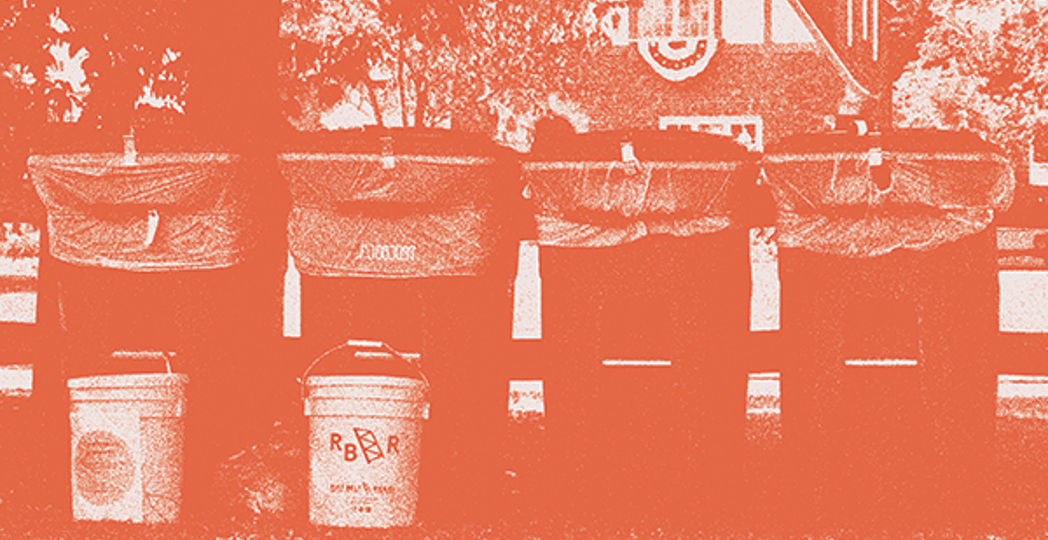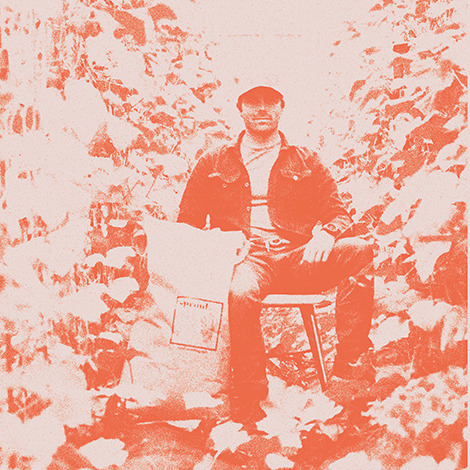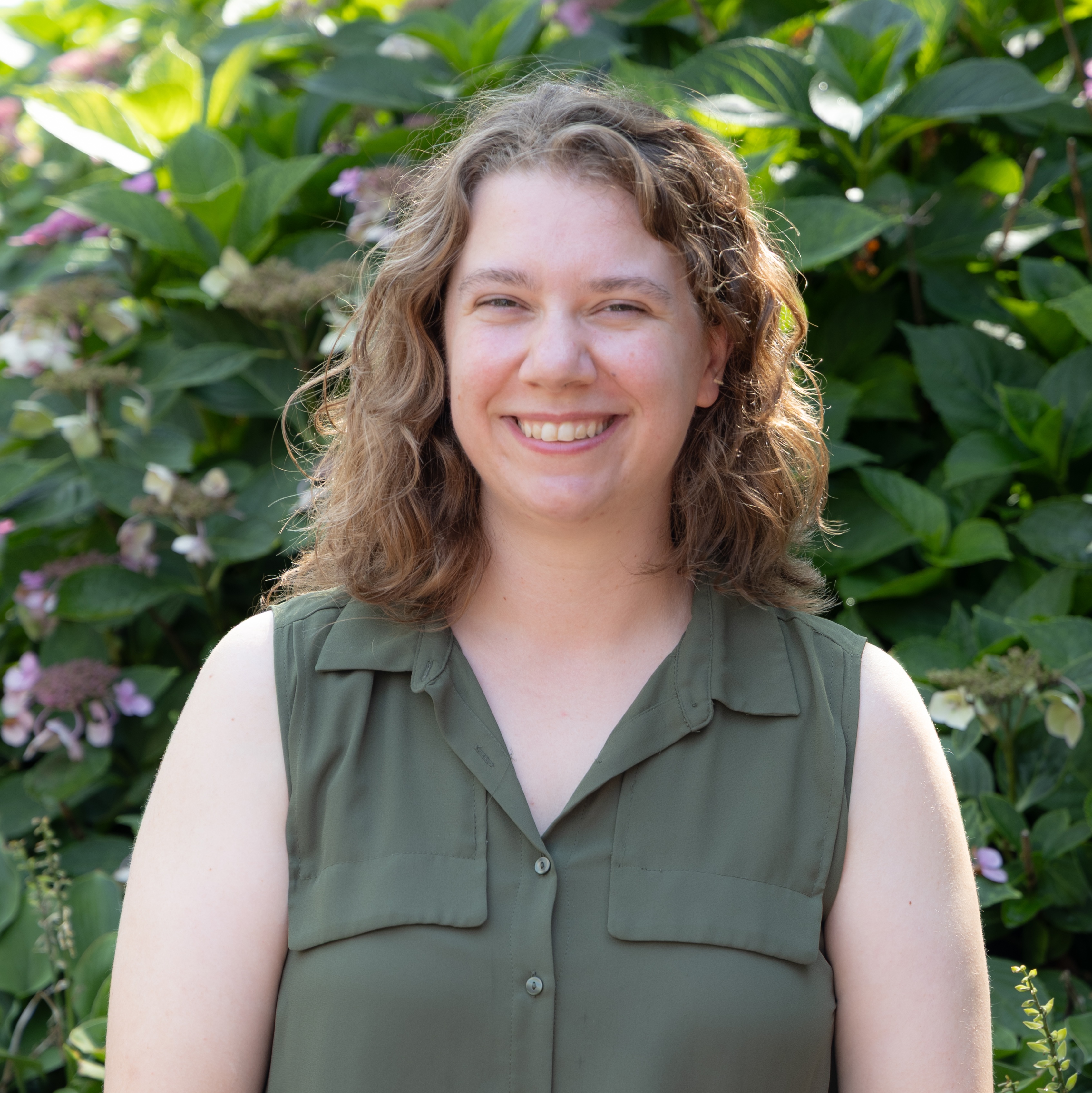Can Rust Belt Riders Make Food Waste Cleveland's Next Great Resource?
by Annie Nickoloff | Feb. 28, 2023 | 1:00 PM

If there’s a heart to the local grocery industry in Cleveland, it’s at the corner of West 25th Street and Lorain Avenue. Inside the West Side Market, on a busy shopping day, the room is alive, as dozens of vendors sell rainbows of vegetables in tightly packed rows; baguettes are handed over in paper bags; dozens of handmade pierogies, tied up in baggies; cuts of meat, selected, sliced, wrapped and taped in wax paper. The building is cacophonous. Crowds move slowly, inching along the grid of stalls and showcases.
For more than a century, this busy space has fed generations of Clevelanders, a longtime hot spot of local industry and business in Northeast Ohio. Now, the Ohio City landmark is set to host another burgeoning industry, one that’s taking off in Cleveland — and one that could redefine the conversation around waste management in the region.
The once-scrappy Rust Belt Riders is now one of Northeast Ohio's most established composting services. The City of Cleveland contracted the group to craft a food composting program with the market. RBR then subcontracted the Hunger Network on a food rescue program.
Now, some of the market’s waste — those bits of bone, egg shells, bruised apples, coffee grounds and fish guts — will make their way from RBR’s bins inside the market and, eventually, turn into soil. At one of its primary composting areas in North Canton, leased from Kurtz Brothers, the scraps mix with wood chips, turned every so often, breaking down over the course of six to eight weeks into compost that then sits for a few months, building up beneficial properties.
That nutrient-rich compost is then trucked back to RBR’s facilities, mixed and transformed into the company’s popular Tilth soil brand and sold back to consumers for garden beds and house plants alike.
The move marks a kind of symbiosis between many different organizations: It’s RBR’s first direct link with the city of Cleveland, and it’s Cleveland's government’s first major foray into composting at a city-owned property.
On a functional scale, the new relationship means edible foods that aren’t sold at the market will head to vendors’ food rescue programs like West Side Catholic Center or Herman’s House of Hospitality, or the Hunger Network to feed Clevelanders in need. If it’s inedible, it’ll be dropped in bins and circulated into RBR’s composting process.
“It was not long ago that we were just on bikes doing this work. To have it rise to the level of the City of Cleveland seeking out funding and investing in a pilot program, I think is really a show of great leadership — but also the determination that our team has been putting in, day-in and day-out, to make sure that these kinds of services can take place,” says RBR co-founder Daniel Brown. “There’s no more iconic food establishment in the city of Cleveland than the West Side Market.”
In collaboration with the city's Office of Sustainability and Climate Justice, the pilot program kicked off earlier this year thanks to funding from Robert Wood Johnson Foundation (awarded to Neighborhood Connections), with support from the Ellen MacArthur Foundation.
In January and early February, Brown, RBR coworker Robert Kurtz and other team members fashioned a composting program for the vendors who opted in. A waste bucket, at each participating indoor vendor’s stall, fills over the course of the day with compostable materials that eventually work their way to the hands of RBR.
RBR is used to dealing with a lot of organic material; in 2022, the organization composted 6.8 million pounds of food waste, and it’s on track to compost 10.4 million pounds in 2023, says Brown.
Those millions of pounds of food waste are a diversion from the county’s landfill contributions. In 2021, the Cuyahoga County Solid Waste District reported 502,026 tons of waste sent to landfills from 58 county municipalities. For perspective, that’s more than 3,300 blue whales or more than 1,100 Boeing-747 airplanes. (As of press time, the county’s 2022 report was not yet available.)
“We need to think about our waste after it goes ‘away,’” says Elizabeth Biggins-Ramer, the executive director of the Cuyahoga County Solid Waste District. “There is no ‘away.’”
Composting in the West Side Market: That kind of headline is all well and good. But if you take several steps away from this historic Ohio City building, it’s bigger than just food and soil. This moment shows a significant shift toward sustainability for a city that has, in recent years, struggled to manage its waste.
More than that, it shows a step away from a linear economy and toward a circular economy, reframing how we think of waste and crafting a system that relies less on consumerism and endless disposal.
Simply put, it’ll turn Cleveland’s trash into treasure.
What's Been Happening with our Trash?
In recent years, Cleveland’s waste systems haven’t looked so good. Of 58 reporting Cuyahoga County municipalities, Cleveland’s 2021 contribution to landfills was the highest, at 157,094.17 tons. In that same year, its recycling rates were among the lowest, at just 2.16% of its waste heading to recycling or composting facilities. (Comparatively, the county achieved an average recycling rate of 26.96%.)
It’s not difficult to understand that contrast, given some context. Back in 2020, the city of Cleveland’s recycling program came to a screeching halt, shut down after its existing contract ran out. Contamination rates — recycling incorrect objects or not cleaning and drying recyclables properly — hovered around 65%, says Ren Brumfield, Recycling Coordinator for the city of Cleveland. Typical contamination rates are closer to 17-25%.
The city’s former recycling program, which had been developed decades ago, had removed some of its emphasis on education over the years, says Biggins-Ramer.
“With any program, you can’t just set it and let it,” Biggins-Ramer says. “Education is paramount to any environmental program, whether that’s recycling or composting. Over the years, unfortunately, Cleveland did run into some issues.”
Brumfield says that, anecdotally, many Clevelanders often used their recycling bins as a secondary trash bin instead of sorting and separating recyclables. When it came time to renew its contract, the city couldn’t find a willing and cost-effective replacement. As time and garbage collection days passed, the city disposed of the contents in both garbage and blue recycling bins into the same landfills.
It was a major stumble for the city and its residents; more than two years passed where the city didn’t have a recycling program at all, much of it during the coronavirus pandemic.
But for the past nine months or so, Cleveland has been working to get back on track. In June, the city reinstated a new recycling program — this time, going for an opt-in approach.
That program has picked up steam, focusing its efforts on educating residents on proper recycling practices, Brumfield says; the opt-in format made Clevelanders more likely to clean recyclables properly, and to not place non-recyclable items into bins. It also combats "wishcycling," or aspirational recycling, when people recycle items they hope can be recycled instead of following city guidelines.
Since June, about 60,000 out of 150,000 Cleveland households have signed up and placed opt-in stickers on their blue bins, signifying their participation in the program, Brumfield says. In that same timespan, the city recycled 1,066 tons of material, with only 15% of that material being contaminated. So far, things have been headed in the right
direction, though Brumfield hopes to get even more households signed up soon.
Another hope: for more residents to feel empowered by the recycling program, pushing those existing recycling rates even higher.
“Reducing where they can, reusing as much as possible, and then recycle what you can recycle, of what’s left; that’s what I like to say. It really comes down to educating people and having them change their mindset,” Brumfield says. “If you can just recycle the cardboard, if you can get rid of those plastic bottles, that’s a first step.”
Rebuilding recycling was one step for the city of Cleveland. The West Side Market composting program is another. Both moves show the city’s quickening gait toward an emphasis on sustainable waste management. That shift is exemplified through Sustainable Cleveland, which became a part of the mayor's office in 2009. The group has spearheaded the city’s collaboration with RBR, among other environmental initiatives.

Sustainability senior manager for the circular economy Cathi Lehn, director of sustainability and climate justice Sarah O’Keeffe and their offices lead the city’s Climate Action Plan. This blueprint for climate progress complements other local climate plans. Coupled with that project are community-based collaborations with local nonprofit Neighborhood Connections and the Circular Cleveland Roadmap, a pathway to make Cleveland’s economy more self-contained — to make products and services less disposable, and more regenerative and durable — and to reduce pollution and waste in the process. The roadmap is in its implementation phase.
“It’s providing guidance for the city and for the region, as we move toward transitioning from our current linear economy, which is very disposable, to a much more circular economy focused on reducing waste,” Lehn says.
Waste reduction aside, a circular economy also keeps more dollars in the region, Brown says.
“If we can be making and remaking products here, locally, there’s less cost baked into those products. Those dollars are recirculating locally,” Brown says.
He continues: “I think we idealized the idea that we’re a manufacturing city, and I think that what an actually circular economy represents is a really cool opportunity to do that again, but in a way that is inspiring and will attract new ideas and new business models.”
Recycling and composting fit into the circular economy discussion — a trending topic for both environmentalists and economists.
So do Circular Cleveland and its partners' twice-monthly Fix-It Cle workshops, where Clevelanders can get help repairing goods instead of replacing them.
What Could a Circular Economy Mean for Cleveland Food?
Keeping items in use longer keeps them out of Ohio’s 18 operational landfills. In Ohio, while there’s still plenty of room remaining in landfills, there’s also a focus on keeping contributions to a minimum, says Biggins-Ramer. Despite strict Environmental Protective Agency restrictions, landfills still have negative environmental effects, including toxic leachate and emissions of methane, a harmful greenhouse gas.
“Good or bad, we do have land as an amazing resource in Ohio,” Biggins-Ramer says. “The land part’s the good part; the land part is also the bad part, because that also allows us to construct more landfills.”
What goes into landfills? It turns out, a whole lot of food. Food waste is the most common type of material landfilled in the United States; it made up more than 24% of the country’s contributions to landfills in 2021, according to an EPA report.
More than one-third of all food that is grown or produced in the United States never gets eaten and ends up being thrown away, according to the EPA. That means that the processes it took to get food on a grocery store shelf are also wasted — agricultural practices, packaging and transportation included.
In Greater Cleveland, food waste stands in stark contrast to the region’s needs; one out of every seven people in Northeast Ohio is food insecure, according to the Greater Cleveland Food Bank.
It’s not just an issue in Cleveland. As a country, we’re not good with food. And once that food winds up in landfills, it doesn’t compost into soil. Instead, it rots and generates methane.
However, when you take those foods out of a landfill and place them in an oxygen-rich composting-friendly environment, something else happens. Composting creates biologically living soil, Brown says — soil that can capture and store carbon and put it to good use. That mix is gold for gardeners and forest management services alike.
“Not only are you avoiding those harmful methane emissions; you’re actually doing something that is a natural climate solution,” Brown says. “I like to say that what we’re doing isn’t simply less bad; it is measurably better.”
The business behind it isn’t bad, either.
“Now you have the ability to build an economy from what is currently viewed as a waste stream,” Brown says. “We can reframe that as a resource stream, that creates jobs that are place-based, that relocalize our food systems, and that sequesters carbon, which improves air quality, water quality and property values for people all over our region.”
However, Rust Belt Riders hit a major business snag when COVID-19 arrived in Northeast Ohio. The service provider, which offers commercial hauling to more than 200 local businesses, had to refocus on its residential programs when many corporations and shops nixed their subscriptions to focus on other COVID-19 challenges.
“We lost, like, 80% of our revenue overnight,” Brown says. “Had it not been for our residential services, we really would have been out of business. There’s just no question about it.”
That residential program became more robust; last year, RBR picked up composting waste from more than 800 households and also welcomed more than 2,000 residents who brought their waste to drop-off locations. The services cost $30-$40 a month for pickup, or $10 a month for drop-off. RBR also continues to offer services to businesses.
Tilth Soil sprouted up during the pandemic, too — and thrived. The brand offers several types of soil mixes. Last year, Tilth brought in more revenue than any other service provided by RBR, says Brown.
“We’ve had a mission of feeding people, not landfills, since our inception,” Brown says. “I think that the work that we’re doing around creating soils is really getting back to that mission of putting soil into the hands of people that are trying to feed our community.”
The company is also an example of a circular economy in action.
“Rust Belt Riders is a fine example of a circular business model,” says Biggins-Ramer. “They collect, they process, they make a product and they get that product back into the economy.”
In the past couple of years, RBR has gained resilience, and its steps forward with the city of Cleveland hint at a growing interest in spreading composting programs for residents, furthering the positive impact and diversion of food waste into a resource.
RBR’s next order of business is looking into accessibility and resources for Clevelanders, creating a system that could embed itself into the city’s waste streams. It will also partner with Rid-All Green Partnership, an urban farm and composting center in the city’s Kinsman neighborhood.
“There’s this famous quote: ‘If it’s inaccessible to the poor, it is neither radical nor revolutionary,’” Brown says. “I think that we need to be developing a system that has equity and justice at its core. We have been doing our best on our own, but I think that this demonstration of the city to commit their funds, their time, their resources to seeing this project through is really an indication that this work needs to be embedded in economic development, in climate justice and in environmental justice.”
Could a citywide composting program for residents be in its future? That’s a few too many steps ahead to guess. Other cities offer and mandate composting, in the quest to become zero-waste. Brown cited the city of San Francisco, which refers to its “resource management department” instead of using the term “waste.”
Flash back to the West Side Market: the new composting program marks a small but impactful step forward in that direction.
This, the iconic Ohio City building at the corner of West 25th and Lorain, can move the conversation forward in Cleveland — every egg shell, fish gut and scoop of used coffee grounds can mean something in the region’s pursuit toward sustainable waste management.
“This needs to be increasingly part of what everyday business looks like, both for manufacturing facilities and recycling facilities, but also on the sort of day-to-day lived experience of Clevelanders,” Brown says. “We live on a planet whose resources are finite, and we’ve not been using resources in that way. The economy of the future needs to be thinking about the useful life of all materials, from their origin, to their utilization, to their reconception into new products.”
He adds: “I think that foods simply — pardon the pun — represent the lowest hanging fruit.”
Is Cleveland the climate safe haven we think it is? We answer that and other burning questions about Northeast Ohio's environment and climate response.
Annie Nickoloff
Annie Nickoloff is the senior editor of Cleveland Magazine. She has written for a variety of publications, including The Plain Dealer, Alternative Press Magazine, Belt Magazine, USA Today and Paste Magazine. She hosts a weekly indie radio show called Sunny Day on WRUW FM 91.1 Cleveland and enjoys frequenting Cleveland's music venues, hiking trails and pinball arcades.
Trending
-
1
-
2
-
3
-
4
-
5










